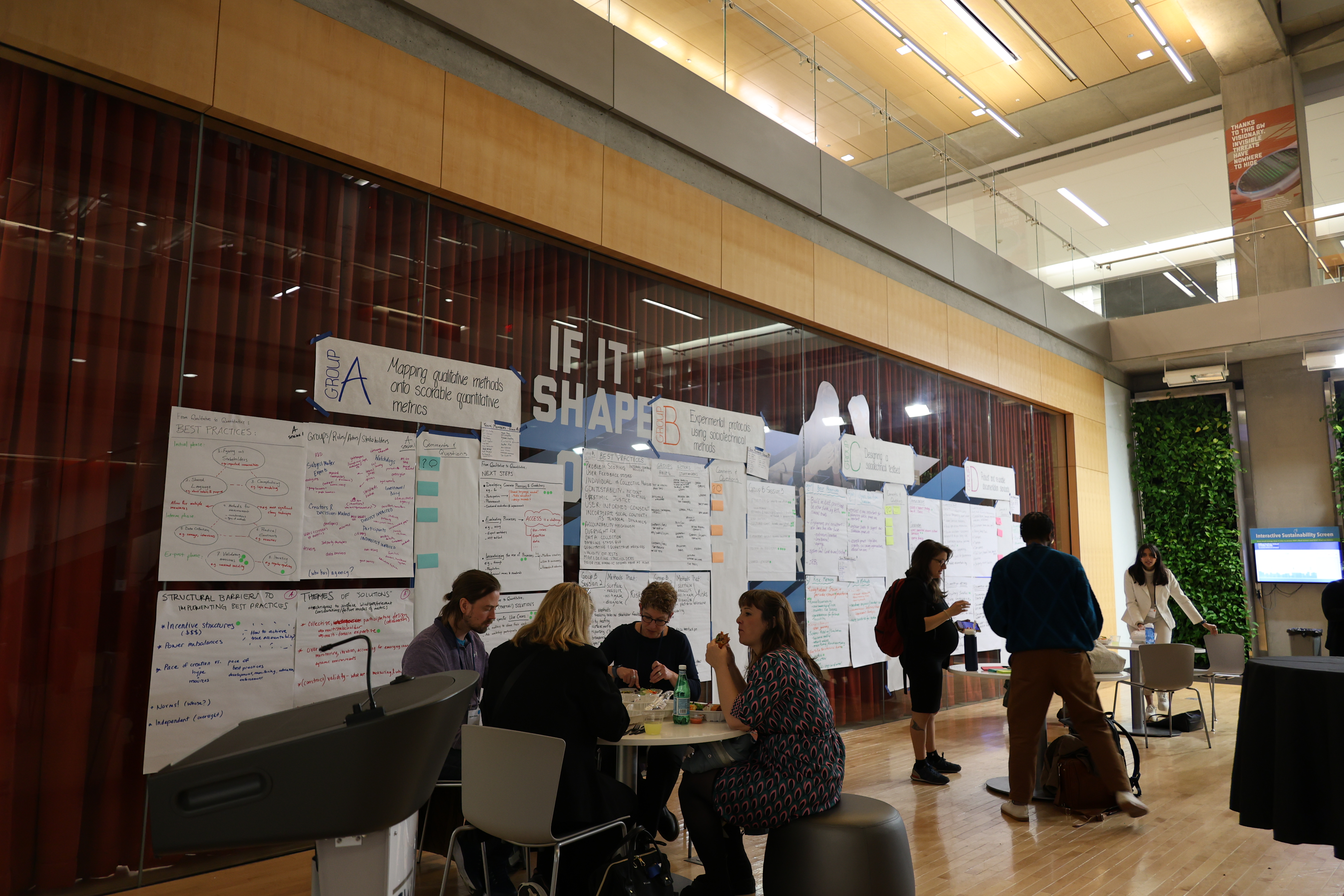As artificial intelligence (AI) is embedded into more and more systems, it becomes critical to examine the impact of these systems, ensuring that their benefits are realized and their harms are mitigated. These systems must also reflect the needs and values of their users. Experts in AI from academia, industry, and government came together in the Science & Engineering Hall on Monday, October 16, and Tuesday, October 17 for the workshop “Operationalizing the Measure Function of the NIST AI Risk Management Framework (RMF)”. During the workshop, participants discussed how to meaningfully operationalize safe, functional AI systems by focusing on measurement and validity in the AI pipeline.
The NIST AI RMF was released in January 2023 and serves as a resource for organizations designing, developing, deploying, or using AI systems to help them manage the many risks of AI and promote trustworthy and responsible development and use of AI systems. It is intended to adapt to the AI landscape as technologies develop so society can continue to benefit from AI while also being protected from its potential harm. Thus, the agency regularly seeks feedback from the AI community, with its current focus being on how to frame sociotechnical evaluations.
The workshop was held collaboratively by the GW co-led Institute for Trustworthy AI in Law & Society (TRAILS), Northwestern University’s Center for Advancing Safety of Machine Intelligence (CASMI), and the Federation of American Scientists (FAS). Together, individuals from these groups worked with participants from industry, government, and academia to explore and define best practices for testing and evaluating sociotechnical approaches for AI systems. They focused specifically on expanding NIST’s AI RMF’s measure function by structuring the meeting around breakout sessions on four primary issues: best practices for mapping qualitative methods onto scorable quantitative metrics, experimental protocols for testing of applications using sociotechnical methods, the development of process and activities associated with a sociotechnical testbed, and robust and reusable documentation standards.
Measuring AI risks includes tracking metrics for trustworthy characteristics, social impact, and human-AI configurations. NIST’s AI RMF lists the characteristics of trustworthy AI systems as valid and reliable, safe, secure and resilient, accountable and transparent, explainable and interpretable, privacy-enhanced, and fair with harmful bias managed. There is no trust or accountability in AI systems without the participation of diverse stakeholders in their creation, which is evaluated in the measure function.
Associate Professor of Engineering Management and Systems Engineering and GW-PI of TRAILS, David Broniatowski stated, “TRAILS is excited to have hosted this workshop, which is a crucial convening of thought leaders and experts in measuring AI risks across industry, academia, and government. Meaningful socio-technical measures can promote trust by helping to surface the needs and perspectives of users and other impacted populations that may otherwise not be reflected in the design process. Well-designed measures also ensure that our models are designed and evaluated in a manner that is fair, transparent, and traceable to our shared values.” ”
Through workshops like these, TRAILS and fellow AI experts are helping NIST to develop a repeatable and standardized methodology to test actual systems against a range of socio-technical metrics within a large-scale testbed of human subjects. By measuring the risks and developing a better understanding of the societal impact of AI systems, they will ensure AI is developed and used responsibly and provide policymakers with important contextual information to better govern AI.


